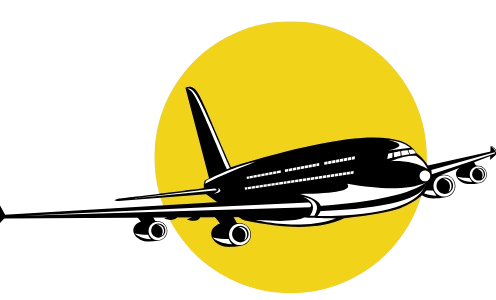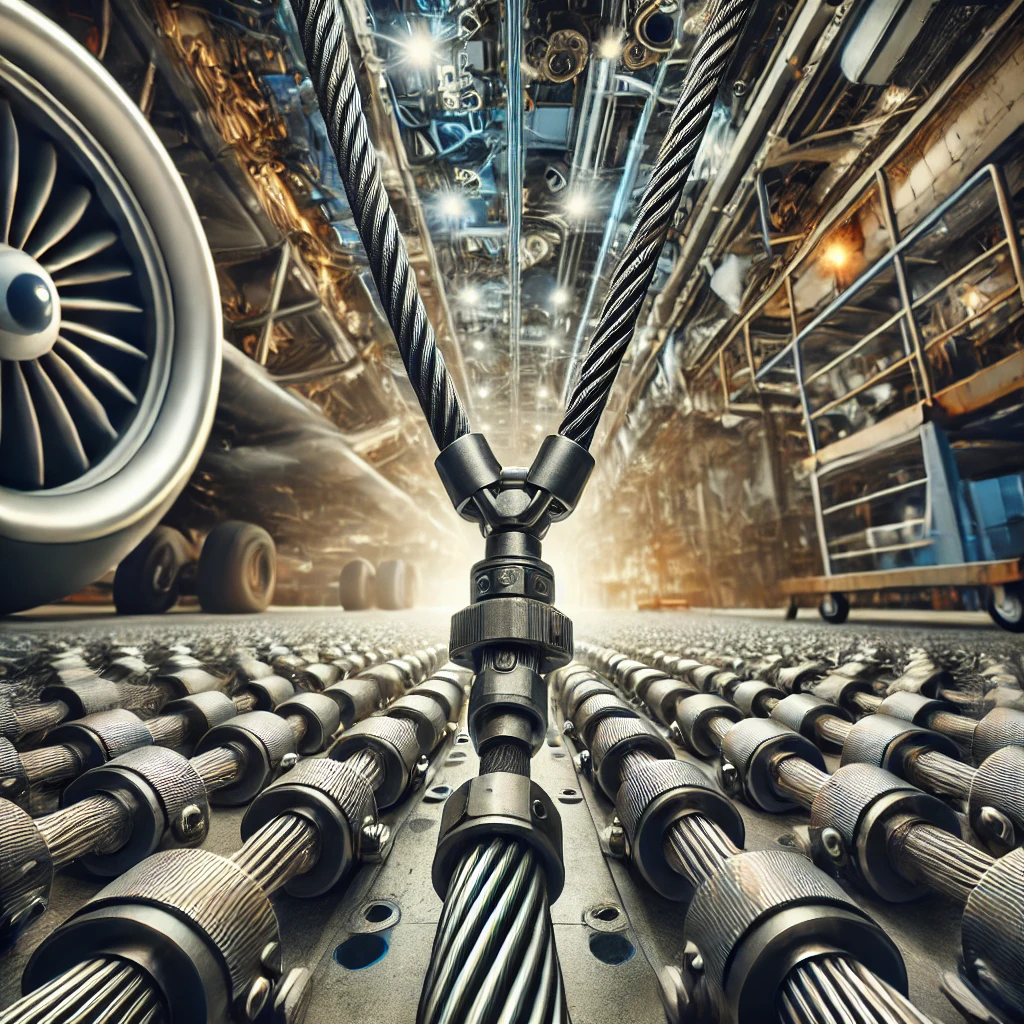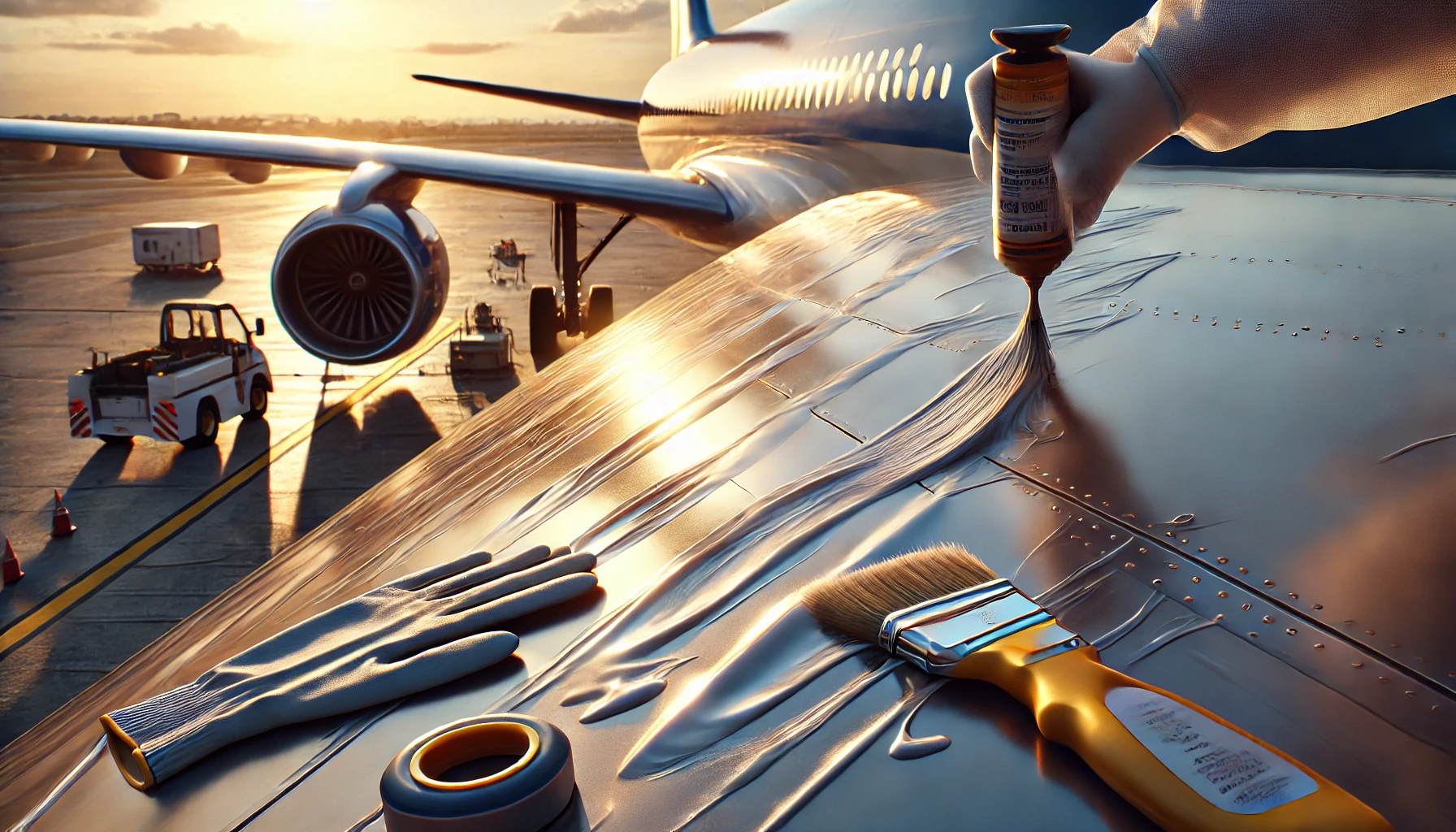Keeping Your Aircraft Cable in Top Shape: Essential Maintenance and Inspection Tips. When it comes to aviation, safety is non-negotiable. One of the unsung heroes of aircraft integrity is the often-overlooked aircraft cable.
These cables play a crucial role in everything from controlling flaps to stabilizing the fuselage, making their maintenance a top priority for every pilot and technician. But how do you ensure that your aircraft cables remain as reliable as they were on day one?
In this blog post, we’ll dive into best practices for maintaining and inspecting your aircraft cables—empowering you with the knowledge that prolongs their lifespan and ultimately keeps your skies safe. Buckle up as we explore expert tips and techniques that can make all the difference in high-altitude performance and peace of mind!
Introduction to Aircraft Cable and its Importance
Aircraft cable plays a crucial role in the aviation industry, serving as an essential component that ensures safety and functionality during flights. From controlling flaps to providing structural support, these cables are integral to many aircraft systems. Understanding the importance of maintaining and inspecting aircraft cable can mean the difference between smooth operations and potential disasters.
As with any critical system in aviation, neglecting regular care for your aircraft cable can lead to serious consequences. Whether you’re an experienced technician or a new pilot, knowing how to extend the life of this vital equipment is key.
You’ll discover that proper maintenance practices not only enhance performance but also contribute significantly to overall safety in the skies. Let’s explore best practices for keeping your aircraft cable in top shape so you can fly with confidence!
The Importance of Regular Maintenance and Inspections for Aircraft Cable
Regular maintenance and inspections of aircraft cable are crucial for safety and performance. These cables endure significant stress during operation, making them susceptible to wear and tear.
Neglecting routine checks can lead to catastrophic failures, risking both lives and expensive equipment. A thorough inspection helps identify potential issues before they escalate into serious problems.
Additionally, regular care extends the lifespan of aircraft cables. By addressing minor concerns early on, operators can avoid costly replacements or emergency repairs down the line.
Maintenance not only enhances reliability but also boosts overall operational efficiency. When every component is in peak condition, flights run smoother with fewer disruptions.
Investing time in systematic evaluations fosters a culture of safety within aviation operations. Prioritizing these practices demonstrates commitment to quality and responsibility in maintaining high standards.
Best Practices for Maintaining and Inspecting Aircraft Cable
Proper handling techniques are essential when working with aircraft cable. Always wear appropriate gloves to prevent oils and dirt from contaminating the cable. Handle it gently to avoid kinks or bends that could compromise its integrity.
Cleaning is another critical aspect of maintenance. Use a soft cloth and mild detergent to remove any debris or contaminants. After cleaning, apply a suitable lubricant designed specifically for cables to reduce friction and protect against corrosion.
Visual checks should be routine. Look for signs of wear, such as fraying, rust spots, or unusual discoloration. Early detection can help prevent more significant issues down the line.
Conducting structural evaluations adds an extra layer of security. This involves inspecting connections and fittings regularly, ensuring they remain tight and free from damage.
Lastly, keep detailed records of all inspections and maintenance activities. Documentation helps track the history of your aircraft cable’s condition over time, making future assessments easier.
Proper Handling Techniques
When working with aircraft cable, proper handling techniques are crucial to ensure its longevity. Always wear appropriate personal protective equipment (PPE) such as gloves and safety glasses. This minimizes the risk of injury and maintains the integrity of the cable.
Avoid dragging or dropping the cables during transportation. Instead, lift them gently and store them in designated containers to prevent kinks or abrasions. When uncoiling, do so carefully to prevent twisting that can lead to structural weaknesses.
Be mindful of your environment too. Ensure that workspaces are clean and free from debris that could damage the cable’s surface. Proper organization not only aids efficiency but also safeguards against accidental harm.
Lastly, educate all personnel involved in handling aircraft cable about these techniques. A well-informed team is key to maintaining optimal conditions for this essential component of aviation safety.
Cleaning and Lubrication
Cleaning aircraft cable is a vital step in its maintenance. Dirt, grime, and other contaminants can accumulate over time, leading to corrosion and reduced performance. Regular cleaning helps ensure the cable remains functional.
Use a soft brush or cloth to remove surface debris. For more stubborn residues, consider using a mild soap solution followed by thorough rinsing with clean water. This prevents any detergent buildup that could harm the cable’s integrity.
Lubrication plays an equally important role in extending the life of your aircraft cable. A suitable lubricant reduces friction between strands and protects against moisture intrusion. Apply it sparingly along the length of the cable for even distribution.
Ensure you select lubricants specifically designed for use on cables and avoid heavy oils that may attract dirt or create clogs. Proper lubrication enhances flexibility while minimizing wear during operation, which is essential for maintaining optimal performance over time.
Visual Checks for Wear and Damage
Visual checks are a critical component in maintaining aircraft cable. Regularly inspecting the cable allows you to catch potential issues before they escalate into serious problems.
Start by looking for fraying or broken strands. These can indicate excessive wear and compromise the cable’s strength. Pay attention to any discoloration, which could suggest corrosion or damage from environmental factors.
Inspect fittings and attachments closely as well. Ensure that there are no signs of rust or looseness around these crucial connection points. Any irregularities here can lead to failure during operation.
Remember, it’s not just about what you see but also how the cable feels when manipulated. A stiff or rough texture may signal internal damage that isn’t immediately visible. Keeping an eye on these details helps ensure safety and longevity for your aircraft cables over time.
Structural Evaluations
Structural evaluations are critical when inspecting aircraft cable. This step ensures that the cable maintains its integrity under various loads and conditions.
During an evaluation, check for any signs of corrosion or fraying. These issues can compromise the strength and reliability of the cable.
It’s also essential to assess how the cable is anchored. Improperly secured cables can lead to unexpected failures during flight.
Consider using specialized tools designed for measuring tension and wear on the cables. Such equipment provides precise insights into their condition.
Document your findings with detailed notes and photographs. This record will help track changes over time, allowing for proactive maintenance decisions in future inspections.
Regular structural evaluations not only enhance safety but also prolong the life expectancy of aircraft cables significantly.
Record Keeping
Record keeping is a crucial component of aircraft cable maintenance. It involves documenting every inspection, maintenance task, and any issues encountered.
Maintaining detailed records helps track the history of each cable’s performance. This information can be invaluable when assessing its overall condition over time.
Additionally, having a comprehensive log allows for easy identification of trends or recurring problems. This proactive approach can prevent future failures and enhance safety.
Using digital tools or spreadsheets can streamline this process. Ensure that records are easily accessible to everyone involved in the maintenance routine.
Consider including details such as dates, findings from inspections, repairs made, and any recommendations for future actions. Regular updates to these logs ensure nothing falls through the cracks during busy operational periods.
Common Issues with Neglected or Improperly Maintained Aircraft Cable
Neglecting maintenance on aircraft cable can lead to serious complications. Fraying is one of the most common issues, where fibers begin to unravel and weaken the integrity of the cable. This often goes unnoticed until it’s too late.
Corrosion is another significant concern, especially in harsh environments. When cables are exposed to moisture or salt, they can deteriorate quickly. This compromises their strength and reliability.
Kinking happens when cables are mishandled or improperly stored. A kinked cable loses its structural integrity and may fail under stress.
Fatigue is an insidious problem that develops over time with repeated use. It causes microscopic cracks that eventually escalate into catastrophic failures if left unchecked.
Ignoring these issues not only jeopardizes safety but also increases overall operational costs due to unexpected repairs or replacements. Regular attention can help avoid these pitfalls effectively.
How Regular Maintenance and Inspections Save Time, Money, and Lives
Regular maintenance and inspections of aircraft cable are essential components in aviation safety. They help identify potential issues before they escalate into serious problems. This proactive approach can prevent costly repairs and downtime.
Neglecting these practices often leads to equipment failure, which could endanger lives. A simple fray or corrosion might seem minor but can have catastrophic consequences during flight operations.
Investigating worn cables early on ensures that replacements occur at the right time—saving money in the long run. The cost of a new cable far outweighs the expenses associated with accidents resulting from neglect.
Moreover, a well-maintained system boosts operational efficiency. When every component functions properly, crews avoid unexpected delays and can focus on their primary responsibilities—flying safely and effectively. Prioritizing regular checks fosters reliability, ultimately benefiting everyone involved in aviation operations.
Tips for Creating a Maintenance Schedule and Sticking to It
Creating a maintenance schedule for aircraft cable is essential. Start by identifying key inspection intervals based on usage and environmental factors. Regular checks help catch issues before they escalate.
Use calendars or digital reminders to track these inspections. Setting alerts ensures you don’t overlook crucial dates.
Involve your team in the process. Assign specific responsibilities, so everyone knows their role in maintaining the aircraft cable.
Document every inspection and maintenance activity meticulously. This not only provides valuable insights but also helps in retaining compliance with aviation regulations.
Lastly, review and adjust your schedule periodically. As conditions change, flexibility allows you to adapt effectively while keeping safety as a priority.
Conclusion: Prioritizing Proper Care for Longevity of Aircraft Cable
Taking the time to prioritize proper care for aircraft cable is essential for its longevity and reliability. Regular maintenance and inspections can safeguard against potential failures that may arise from wear and tear. By following best practices, including handling techniques, cleaning protocols, visual checks, structural evaluations, and diligent record-keeping, you create a proactive approach to managing your aircraft cable.
Neglecting these practices not only risks costly repairs but can also endanger lives. A well-maintained aircraft cable ensures safety in operations while saving time and money in the long run. Creating a maintenance schedule tailored to your specific needs reinforces accountability and helps keep everyone on track.
The health of your aircraft depends significantly on each component working harmoniously together. When it comes to aircraft cables, investing effort into their upkeep will undoubtedly pay off by enhancing performance as well as extending their service life. Prioritizing this aspect of aviation equipment fosters both safety and efficiency in your operations.




